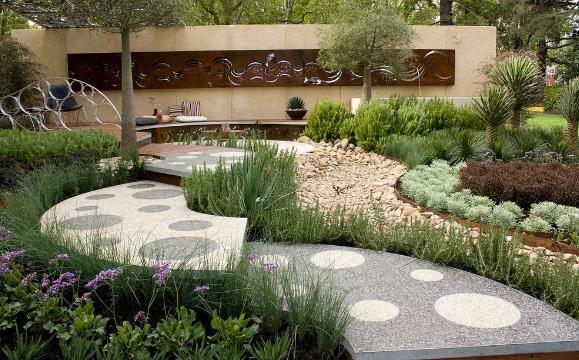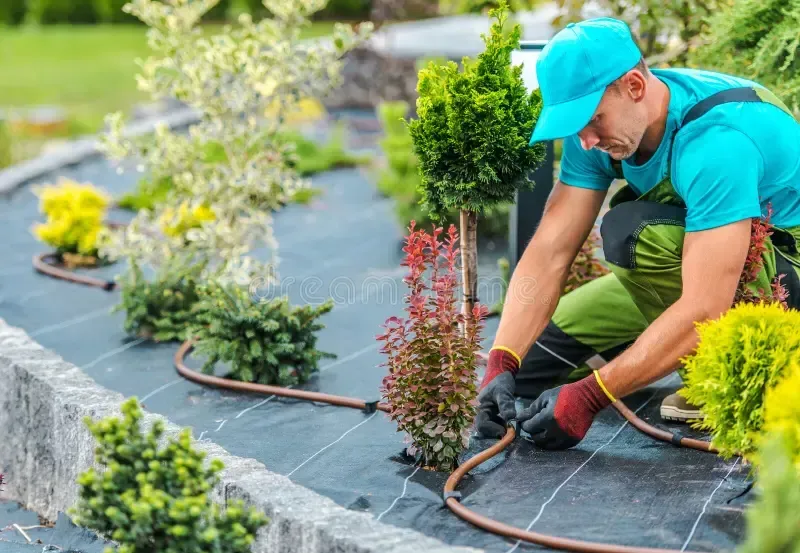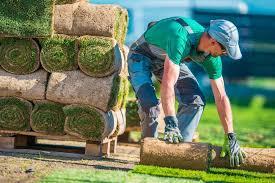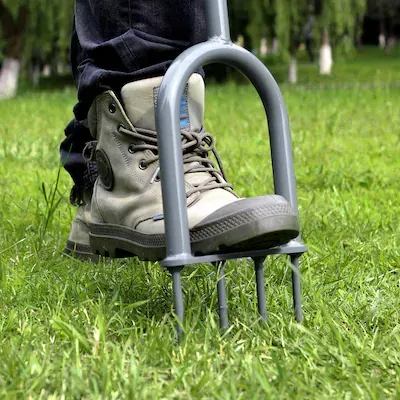
Transforming Your Outdoor Space: The Art and Science of Landscaping
Introduction:
Landscaping is more than just a method of beautifying your outdoor space; it's an art form that blends creativity with environmental stewardship. Whether you’re a homeowner looking to boost curb appeal, a business owner wanting to create an inviting atmosphere, or simply someone who enjoys the serenity of a well-tended garden, landscaping offers a variety of ways to transform your space.
The Importance of a Well-Designed Landscape:
A well-thought-out landscape design can significantly enhance the value of your property. Beyond aesthetics, landscaping can improve the functionality of your outdoor space, making it a perfect extension of your home or business. It also plays a crucial role in environmental conservation, helping to reduce energy costs, prevent soil erosion, and support local wildlife.

Key Elements of Landscaping:
Planning and Design: The foundation of any successful landscaping project is a solid plan. This involves assessing your space, understanding your needs, and envisioning the end result. Professional landscapers often use design software to create detailed plans, but even a simple sketch can help you visualize your project.
Plant Selection: Choosing the right plants is essential for creating a sustainable landscape. Consider factors such as climate, soil type, and the amount of sunlight your space receives. Native plants are often a great choice as they require less maintenance and are more resistant to local pests and diseases.
Hardscaping: Hardscaping refers to the non-plant elements of your landscape, such as patios, walkways, retaining walls, and water features. These elements not only add structure and functionality to your space but also enhance its aesthetic appeal.
Water Management: Proper irrigation is key to maintaining a healthy landscape. Incorporating efficient watering systems, such as drip irrigation or rainwater harvesting, can help conserve water and reduce utility bills.
Sustainability: A sustainable landscape minimizes environmental impact. This can be achieved through practices such as composting, using organic fertilizers, and reducing the use of chemical pesticides. Sustainable landscapes also support local biodiversity by providing habitats for birds, insects, and other wildlife.

Popular Landscaping Trends:
Outdoor Living Spaces: More homeowners are extending their living areas outdoors by adding features like outdoor kitchens, fire pits, and seating areas. These spaces are perfect for entertaining and provide a cozy retreat.
Low-Maintenance Gardens: Busy lifestyles have led to a rise in low-maintenance landscapes. These often feature drought-tolerant plants, automated irrigation systems, and simple, clean designs.
Edible Landscaping: Combining beauty with functionality, edible landscaping integrates fruits, vegetables, and herbs into traditional garden designs. This trend is perfect for those looking to grow their own food while maintaining an attractive outdoor space.
Native Plants: As mentioned earlier, the use of native plants is on the rise. These plants are well-adapted to the local environment and require less water and care, making them an eco-friendly choice.

Conclusion:
Landscaping is a rewarding endeavor that can transform your outdoor space into a haven of beauty and tranquility. Whether you’re starting from scratch or enhancing an existing garden, the possibilities are endless. By focusing on thoughtful design, plant selection, and sustainable practices, you can create a landscape that not only looks stunning but also supports the environment.
Ready to get started? Whether you’re a DIY enthusiast or prefer to hire a professional, the journey to a beautifully landscaped space begins with a vision. Let your creativity blossom, and watch your outdoor space flourish!
Blog > What is Landscaping?
What is Landscaping and Will it Work For My Lawn \ Garden?
What is landscaping, and will it work for my lawn or garden? Landscaping involves the art and science of designing, planning, and maintaining outdoor spaces. It’s about creating a visually appealing and functional environment that suits your needs. Whether you’re looking to enhance your lawn or transform your garden, landscaping can provide tailored solutions that work for your specific space, ensuring it thrives and looks its best.

The Most Common Techniques for Landscapping
The most common techniques for landscaping involve a blend of art and science to create beautiful, functional outdoor spaces. These techniques include selecting the right plants for your climate, designing with layers to add depth and texture, and incorporating hardscaping elements like pathways and patios. Proper irrigation, soil preparation, and regular maintenance are also essential components. By combining these strategies, you can achieve a landscape that is both aesthetically pleasing and sustainable.

The most common techniques for landscaping include a variety of methods designed to enhance the beauty and functionality of outdoor spaces. From carefully selecting plants that thrive in your specific environment to designing with layers that create depth and interest, each technique plays a crucial role. Hardscaping, such as adding pathways and retaining walls, provides structure, while proper soil preparation and irrigation ensure a healthy landscape. Regular maintenance is key to keeping your outdoor area looking its best.
What is Aerator?
An aerator is a tool used in lawn care to improve soil health and promote better grass growth. It works by creating small holes in the soil, allowing air, water, and nutrients to penetrate deeper into the ground. This process helps reduce soil compaction, enhances root development, and leads to a healthier, more resilient lawn. Aeration is especially beneficial for lawns that experience heavy foot traffic or have dense soil, as it encourages optimal growing conditions.

More to Know About Landscaping
Landscaping is more than just arranging plants and flowers; it involves a comprehensive approach to designing and maintaining outdoor spaces. From understanding soil types and selecting the right plants for your climate to incorporating hardscaping elements like patios and walkways, landscaping requires careful planning and execution. Additionally, regular maintenance, including pruning, fertilizing, and irrigation, is crucial to keeping your landscape thriving year-round. There’s always more to learn and consider when it comes to creating and sustaining a beautiful and functional outdoor environment
Contact Us
Service Hours
Social Media
4216 54 Ave SE, Calgary, AB T2C 2E3
(587) 718-7713
Monday - Friday: 9:00 AM - 5:00 PM
Saturday: 10:00 AM - 2:00 PM
Sunday: Closed




Blog > What is Landscaping?
What is Landscaping and Will it Work For My Lawn \ Garden?

What is landscaping, and will it work for my lawn or garden? Landscaping involves the art and science of designing, planning, and maintaining outdoor spaces. It’s about creating a visually appealing and functional environment that suits your needs. Whether you’re looking to enhance your lawn or transform your garden, landscaping can provide tailored solutions that work for your specific space, ensuring it thrives and looks its best.
The Most Common Techniques for Landscaping
The most common techniques for landscaping involve a blend of art and science to create beautiful, functional outdoor spaces. These techniques include selecting the right plants for your climate, designing with layers to add depth and texture, and incorporating hardscaping elements like pathways and patios. Proper irrigation, soil preparation, and regular maintenance are also essential components. By combining these strategies, you can achieve a landscape that is both aesthetically pleasing and sustainable.

What is Aerator?
An aerator is a tool used in lawn care to improve soil health and promote better grass growth. It works by creating small holes in the soil, allowing air, water, and nutrients to penetrate deeper into the ground. This process helps reduce soil compaction, enhances root development, and leads to a healthier, more resilient lawn. Aeration is especially beneficial for lawns that experience heavy foot traffic or have dense soil, as it encourages optimal growing conditions.
More to Know About Landscaping
Landscaping is more than just arranging plants and flowers; it involves a comprehensive approach to designing and maintaining outdoor spaces. From understanding soil types and selecting the right plants for your climate to incorporating hardscaping elements like patios and walkways, landscaping requires careful planning and execution. Additionally, regular maintenance, including pruning, fertilizing, and irrigation, is crucial to keeping your landscape thriving year-round. There’s always more to learn and consider when it comes to creating and sustaining a beautiful and functional outdoor environment
Contact Us
(587) 718-7713
4216 54 Ave SE, Calgary, AB T2C 2E3
Service Hours
Monday - Friday: 9:00 AM - 5:00 PM
Saturday: 10:00 AM - 2:00 PM
Sunday: Closed
Social Media




![Business Name - [keyword]](https://images.leadconnectorhq.com/image/f_webp/q_80/r_1200/u_https://assets.cdn.filesafe.space/5bDPMwfixf0W49uKivaD/media/66d77625cccab215a34e8f44.png)
2021 | GreenThumb Ai | All Rights Reserved
Privacy Policy | Site Map
